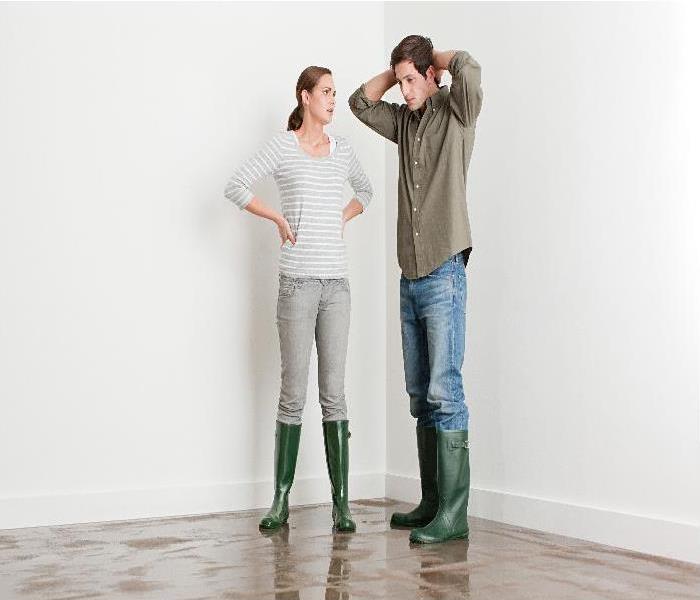What Are the Best Drying Tools for a Water-Damaged House in Little Rock?
5/24/2020 (Permalink)
Our Professionals Have Premier Extraction and Drying Tools for Your Little Rock Residence
Cleaning up after a water loss is not always as straightforward as it should be. Standing water can especially create concerns for the house by moving debris and soils from one area to another. Restoring damaged areas first begins with thorough extraction and drying of the exposed materials and regions of your Little Rock property, which involves the premier tools and equipment in our inventory.
Choosing professional restoration and water cleanup for Little Rock homes can have our SERVPRO team arriving shortly after you discover a disaster. We strive to mobilize to a damaged address within hours of the first notice of loss, helping us to manage mitigation better and do more to reduce losses and protect the structural integrity and contents of your residence.
When Do I Need Professional Restoration Services?
Few instances are strictly superficial and easily managed by the homeowner. Because water continues to move after the disaster, saturation and moisture damage can affect areas and materials far from the origin point. Knowing when you need professional services can help you to get this process started as soon as possible to better prevent irreparable damages in the house. Some of the clear indicators that you need professional restorers are:
• Standing Water – When water pools on surfaces like the floors of your home, this can be a clear indicator that you need professional services like extraction. We have efficient tools to help in this regard, including submersible pumps and wet vacuums.
• Structural Damage – Identifying structural deterioration and damages can also indicate a pressing need for professional restoration. Drying up saturated materials promptly can reduce how widespread and destructive water damage can become.
• Water Migration – The movement of water throughout the damaged area that you can see is often only part of the damage that exists. Migration of water damages can happen beyond the surfaces of materials, making it critical to identify where moisture is and the appropriate drying techniques.
What is the Best Tool for Drying My House?
Drying your home often falls to a highly productive type of tool in our inventory – the air mover. This high-velocity fan directs airflow at damaged materials and moist environments. By introducing heated air into damp spaces and against saturated materials, we can promote evaporation and restore your house more efficiently. There are multiple models and types of air movers in our inventory, and some of these include:
• Axial – Axial units are designed to help remove the moisture in an open area or several surfaces and contents simultaneously. These are the larger and more productive of the two primary types, as axials have a more powerful output. Consequently, these units require more electricity to function.
• Centrifugal – These types of air movers focus on specific damaged areas of a saturated material inside of your home. By directing a concentrated blast of warm air on a specific point of a surface, we can expedite the evaporation process to promote faster and more thorough drying.
• Low-Profile – Low profile centrifugal units have multiple purposes throughout your house when drying is necessary. These tools get used in carpet floating and are ideal for drying underneath permanent structural fixtures.
What Special Tools Might Be Necessary to Dry My House?
While there are traditional drying tools that get used on almost every recovery job, our SERVPRO team also can benefit from the use of specialty drying equipment that can be beneficial for specific circumstances. Some of the unique machines and tools used in drying your home include:
• Carpet Wands – Removing water from carpeted floors is one of the first steps in successfully drying and preventing reinstallation. These attachments connect with truck-mount pumps and other extractors as the motor for the water removal.
• Positive Pressure Systems – By infusing a damaged wall with multiple hoses where heated blasts of air can evaporate trapped moisture, we can reduce the need for controlled demolition or full-scale reconstruction.
• Portable Electric Heaters – By modifying the overall temperature in a damaged area, our professionals can make drying more efficient and productive.
How Do SERVPRO Technicians Know When the Job Is Done?
One of the methods of determining when the restoration has been successful is using moisture detection tools to identify existing moisture and dampness pockets. When these cannot get located in the previously damaged areas, we can feel confident in turning the property back over to you.
No matter how severe and threatening water losses can be for your home, our SERVPRO of Northwest Little Rock team can help with a fast response and cutting-edge equipment. Give us a call anytime that you need us at (501) 803-9700.






 24/7 Emergency Service
24/7 Emergency Service